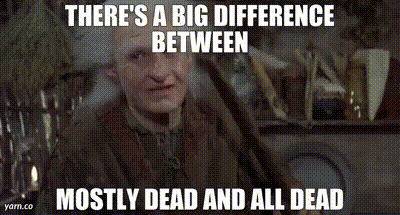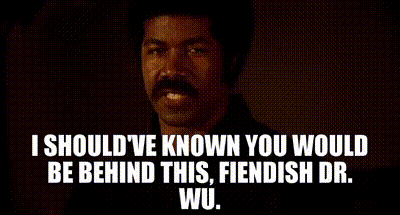How To Talk So Kids Will Listen (To Steely Dan)
Katy Lies, Pharrell Testifies, DoorDash Demons, and Vinyl Confessions
ET(HC) Phone Home
You can tell a lot about a generation by how they call home.
For me, while away at college, it was Sunday nights—when long-distance rates were cheapest. If I called outside that window, my parents knew one of two things had happened: I was in trouble or I needed money. Calling etiquette has evolved significantly since then, and Gen Z has perfected the art of the unspoken rule—never call unannounced. If you’re going to make an actual phone call, you text first to warn the recipient.
So when my phone rang one night, and I saw it was my daughter, my first thought was butt-dial. Then I heard her voice.
It was shaky. My daughter is never shaky. My heart rate went from resting to high alert.
“Dad?”
“Yeah. I’m here. What’s up, sweetheart? You okay?”
“I need your help.”
Let’s pause here for a moment.
Raise your hand if bravado, inexperience, or bad judgment led you to consume one too many edibles.
Perhaps you ate one but didn’t feel anything after 20 minutes, so you went in for round two, only to find yourself holding onto the couch for dear life an hour later because gravity just stopped working. Or maybe you misread the packaging (why are the fonts on those things so tiny?) and mistook 50 mg for 5 mg. And now you’re unsure if those Girl Scouts peddling cookies earlier were ACTUALLY Girl Scouts. But you don’t want to check the cookie boxes for listening devices because that’s EXACTLY what they’d expect you to do!
My daughter’s situation wasn’t nearly that extreme, but I am pleased and proud that she called me for reassurance. A long-standing family agreement about such things meant no judgment, lecture, or consequences. If you’re drowning, you don’t need a swimming lesson; you need a flotation device. Besides, I’ve been there. I know the anxiety of being too high in the wrong place at the wrong time—like that one time I spent an edible-ruined cross-country flight whispering airplane safety instructions to myself so I wouldn’t forget them. No doubt some of my fellow passengers noticed the guy white-knuckling it from New York to Los Angeles while muttering, “Put your oxygen mask on first,” under his breath for the entire flight. I suppose being Weird Oxygen Mask Guy in somebody’s story forever isn’t the worst outcome.
But I digress.
The important thing is that Pharrell Williams had prepared me for this moment.
Pharrell Isn’t Just Any Major (Label) Dude
Years earlier, while working at Virgin Records as Head of Digital Marketing, I had breakfast with Pharrell to discuss the marketing campaign for N.E.R.D.’s Fly or Die album. Before the food even arrived, the conversation turned to music and production.
Pharrell was mesmerizing to listen to—an encyclopedic mind who could rattle off obscure music history as quickly as he could break down the layers of his own Neptunes beats. Somewhere in our discussion, he went deep on Steely Dan. He admired their impeccable production, but Pharrell was even more fascinated by their lyrics—specifically, one line.
For context, we were talking about his track “Wonderful Place,” a song on Fly or Die about getting high.
Pharrell admitted that he wasn’t much of a pot smoker—it made him too anxious and wondering if he’d ever feel like himself again. But when that happened, there was one particular Steely Dan lyric that changed his mindset:
“When the demon is at your door, in the morning it won’t be there no more.”
That’s from “Any Major Dude Will Tell You,” a track off Pretzel Logic, and according to Pharrell, it was the perfect mantra for riding out a bad trip. He also thought it was among the most genius lyrics he’d ever heard.
As a longtime Steely Dan fan and appreciator of vague but impactful lyrics, that breakfast discussion with Pharrell stuck with me. I thought about it for years afterward and always think about Pharrell whenever I spin Steely Dan. So when my daughter called, I told her about my conversation with Pharrell. I told her that even one of the most confident, self-assured artists of our time had been in her exact position—and Steely Dan had helped him through it.
We laughed. We talked. I told her my own stories of overindulgence (see: the Oxygen Mask Incident of 2003). We discussed the demon at the door and her growing confidence that he’d be gone the next time she went to look. We agreed that getting something to eat and a good night’s sleep would help put everything right. It turns out that the demon was no match for the pizza delivery guy.
That night, after we hung up, I kept thinking about the strange, magical way music weaves itself into your life when you least expect it. Steely Dan had always been part of our family fabric—spinning non-stop on the stereo when my daughters were young, soundtracking road trips, and making unexpected cameos in our daily routines. The kids loved mocking my antics: my note-for-note air guitar solo to “Kid Charlemagne,” performed with unsettling precision while standing on the couch, our living room momentarily transformed into Madison Square Garden. Or the way I channeled Steve Gadd, nailing the drum parts to “Aja” against the dashboard while navigating traffic on the Van Wyck Expressway before the girls would join me in memorable Steely Dan sing-alongs with hilariously bad, misheard lyrics. Steely Dan was comfort food listening—the sounds of shared inside jokes, familiar lyrics, and an ever-present soundtrack that kept us close as a family.
But music is different when it finds you in your hour of need.
That night, Steely Dan found my daughter. In that moment of uncertainty, their music wasn’t just a road trip playlist or an inside family joke—it was a beacon. A thread of reassurance. Because underneath their sleek cynicism, quirky characters, and studio perfectionism, Steely Dan always had a quiet, knowing whisper beneath the smirk. Yes, the world is filled with danger, con men, beautiful losers, and poisoned promises. But maybe—just maybe—everything will be okay in the morning. Steely Dan isn’t just about irony, sarcasm, obscure literary references, and sonic precision. It’s about finding meaning in the chaos. And no album of theirs encapsulates that better than Katy Lied—a record they themselves tried (to some degree) to disown, but for me, a lifeline when I needed it most.
Katy Lied is Steely Dan’s most bittersweet, obsessively anxious, and perfectly imperfect album. With their catalog finally getting a long-overdue reissue program, Katy Lied was the album most primed for a sonic upgrade, for reasons I’ll explain momentarily. One of the reissue formats is Acoustic Sounds’ patented UHQR Clarity Vinyl—a double LP, transparent vinyl package with all the trimmings and a wallet-busting price tag.
Although Katy Lied is my favorite Steely Dan album, I wasn’t ready to drop $150 on a record I owned on vinyl (3X), a couple of CDs, and a high-resolution digital file. I figured I’d heard all there was to hear until a colleague sent a copy to Jazz and Coffee HQ for a test drive.
tl;dr—I stand corrected. The UHQR is the sonic apex predator of Katy Lied editions.
Katy Lied: Steely Dan’s Beautiful, Frustrating, Paranoid Jazz Noir Masterpiece
If a classic noir film starts with a crime, a double-cross, or a bad decision made in good faith, Katy Lied pulls off the hat trick.
The Crime: Dead Musicians Society
Steely Dan whacked their own band—not with piano wire in the back of a dimly lit club, but with a lengthy studio booking and a decision to put the tour bus in storage, along with their Howard Johnson’s frequent diner cards. Becker and Fagen had experienced enough flimsy motel mattresses, terrible water pressure, and rockstar theatrics to last a lifetime. No more bandmates blowing solos because they were high, no more battle-of-the-ego rehearsals, no more gambling on whether the PA would work. Instead, they assembled a squad of session pros so razor-sharp they made the Ocean’s Eleven crew look like the Keystone Kops. The road was for suckers—the studio was their fortress. After years of compromises at the various Mos Eisley Cantinas that passed for music venues across North America, Becker and Fagen wanted their own private recording Death Star: modern, impenetrable, and packed with enough technological firepower to vaporize any bum note before it even hit the tape. A stable, touring lineup was overrated in the world of Steely Dan. They’d rather have a stable of working musicians in the company of engineering pros who could help realize the music they heard clearly in their minds but struggled to bring to life.
The original Steely Dan crew—Jeff “Skunk” Baxter, Jim Hodder, and Denny Dias—had been with them since the beginning. They played on Can’t Buy a Thrill, Countdown to Ecstasy, and Pretzel Logic. They helped shape the Dan’s signature mix of jazz sophistication and rock swagger. But in the cold, calculating minds of Becker and Fagen, the band had become an obstacle to perfection. While Dias’s guitar work would continue to be a fixture in Steely Dan’s orbit, he became a hired gun, along with the other session legends that comprised the Katy Lied lineup:
If Katy Lied were a heist film, the original band would be drinking cheap beer in some dive bar, cracking bad jokes as they stashed a modest envelope of the days’ take into dirty vest pockets. In contrast, the new Steely Dan crew would cut diamonds from the morning heist with nanotech-powered lasers while moving their stolen millions via untraceable cryptocurrency. With their pick of next-level musicians on the payroll and the distractions of the road fading into Steely Dan's history, Becker and Fagen were primed to make their next record. What could possibly go wrong?
The Double-Cross: The DBX Debacle
In the mid-1970s, high-fidelity recording was a wild west of competing noise reduction technologies. Enter DBX, a noise-reduction system promising extended dynamic range, a lower noise floor, and pristine clarity. But it came with a catch. It compressed and expanded the sound in a way that required flawless calibration, and when things went awry, they failed SPECTACULARLY.
That’s precisely what happened with Katy Lied. The DBX system malfunctioned, degrading the final mix and leaving the album with a weirdly compressed, “veiled” sound. Becker and Fagen sent the tapes to DBX engineers in Boston, who were able to reverse “90% of the damage” (someone please tell me how they calculated that number) but ultimately failed to repair things completely. To fans, it sounded fine. To Becker and Fagen, it was an unforgivable betrayal. They even snarked about it in the original liner notes, but their humor was a contemptuous grin at a tragic event. Guitarist Denny Dias later described the DBX malfunction as making the recordings “dull and lifeless.” It should have made the album crystal clear, but instead, it muffled details, flattened dynamics, and left the band angry and depressed. For Becker and Fagen—obsessive sonic perfectionists—this was unforgivable. They refused to listen to the final mix for decades.
In the just-released UHQR edition of Katy Lied, journalist Michael Fremer does a great job walking readers through this sonic Shakespearean tragedy. The notes authored by
included with the deluxe package are a significant value addition for students of this record, turning a historically murky and technologically complex incident into a compelling narrative. Though the new UHQR edition doesn’t undo the sonic harm or rewrite history, it does present the music on Katy Lied more enjoyably than any other copy on any other format I’ve ever owned. Full stop. Worth $150 vs. the $30 single LP edition that’s just been released? I haven’t compared it, but the UHQR double LP, 45 RPM edition smokes every vinyl, CD, and digital edition under my roof. I know this record like I know the back of my hand and hear details I’ve never noticed. Expensive, audiophile pressings of Steely Dan records haven’t previously tempted me. Hopefully, my wife isn’t reading when I confess I am very much tempted now. That said, she and I listened together the other evening, and she was as knocked out by what she heard as I was.The Bad Decision: Trusting the Machine
Putting their trust in untested technology, believing it would elevate their sound, was a mistake. They weren’t wrong in theory—Katy Lied should have been their first pure studio triumph, a razor-sharp transition from their rock band past to the jazz-inflected precision of their future. Instead, they got a masterpiece they could never love—a haunting irony, considering Katy Lied is an album obsessed with deception, regret, and things that aren’t what they seem. They weren’t wrong in theory, and it seemed like a good idea at the time. Steely Dan lived and died by sound quality, and DBX promised something revolutionary. But they bet everything on an unproven, experimental technology; when it failed, there was no way to undo the damage.
It was a classic noir setup.
A high-stakes gamble.
A too-good-to-be-true promise.
A fall from grace, leaving heroes standing in the rain, remorsefully flicking cigarette butts into a puddle filled with regret.
Still, even with the flaws baked into the final mix, Katy Lied remains a masterpiece.
Track-by-Track: The Noir Soundtrack of 1975
1. Black Friday – The Great Escape
A Wall Street grifter cuts and runs, bound for Australia as he ponders the world burning behind him. The song references the 1869 Black Friday gold market crash but also feels tailor-made for modern speculative opportunists willing to exploit economic collapse for personal gain: the Enron guys, Jordan Belfort, or other modern financial villains. If this were a movie, it’d be The Wolf of Wall Street meets Chinatown—a swindler’s anthem set to a relentless rock groove. I wonder how many listeners pulled their Encyclopedia Brittanica off the shelf after deciphering the lyrics to find out where Muswellbrook was located.
2. Bad Sneakers – Nostalgia with a Knife
Is it possible to experience nostalgia for a time that wasn’t? “Bad Sneakers” manages to hold several perspectives simultaneously. Dreamy with freedom yet constricted with neurosis, utterly absurd yet deeply melancholic, “Bad Sneakers” is a musical analytic couch for an individual grappling with alienation, despair, and an inability to find his place in the world. Michael McDonald’s brilliant vocal harmonies double down on the nostalgia while introducing a hint of paranoia. Amidst the emotional tumescence is a moment of clarity when our protagonist muses, “Do take me for a fool, do you think that I don’t see, that ditch out in the valley that they’re digging just for me?” I remember uttering that line to a fellow executive during my last few weeks at one of the record labels I worked for when it was clear the scenery was being shifted behind me by the new private equity owners. I saw it coming and did unto others before they could do it unto me. No regrets.
3. Rose Darling – The Velvet Trap
Becker and Fagen serve up a sparse, urgent, and concise tale of sexual tension, religion, and regret with jazzy undercurrents that foreshadow Aja. Though “Rose Darling” doesn’t break the three-minute barrier, there’s still plenty to unpack musically and lyrically. Is Snake Mary the religious, overbearing “house mother” who disapproves of the narrator’s after-hours dalliances? A competing lover? Who exactly has feelings for whom? There’s a playfulness in the delivery that conceals deep doubts, and by the end, there are more questions than answers. The lyrics hint at a lover, a memory, or unspecified allegations that won’t go away. If “Black Friday” was a one-man heist movie, “Rose Darling” is the soundtrack to a Hitchcockian love affair gone sideways. Think Vertigo or Body Heat set at a religious institution—desire arrives with complexity and an inevitable expiration date.
4. Daddy Don’t Live in That New York City No More – Felonious Jazz
A dirty cop? A small-time hustler running out of luck? A pimp who used to be the baddest cat in Greenwich Village before his midlife crisis? The funky, almost playful groove masks a cold-blooded goodbye letter, postmarked by guitarist Larry Carlton with an unforgettable edge. Somewhere between Scorcese and Shaft is a short film about this character, but the ending would be like the series finale of The Sopranos—it’s not clear who lives, who dies, and who decides.
5. Doctor Wu – Addiction, Betrayal, and the Loudness of 3 AM
It may be the most debated Steely Dan song ever. Doctor Wu—a drug dealer? A psychiatrist? A guru? A back alley physician who handles overdose cases with no questions asked? A metaphor for addiction itself? Alto sax legend Phil Woods outdoes himself with a PERFECT solo that could pass for wisps of smoke spiraling into the atmospheric soup that passes for Manhattan’s summer night air. If Katy Lied had an actual film noir moment, this is it. It’s The Long Goodbye in musical form—a lost soul hoping for a familiar figure to emerge through the halogen streetlights bearing the solution to his drug-gripped nightmare. A cryptic tale of addiction, deception, and escape—but to where, exactly?
6. Everyone’s Gone to the Movies – The Darkest Joke in Pop
If you’ve ever wanted a Steely Dan song that sounds like a sitcom theme but is actually about a creepy guy showing kids porn, congratulations! This one’s for you. Steely Dan perfected the art of making happy music about depressing subjects. At first listen, it sounds like an upbeat, playful tune. Then the lyrics hit, and you find yourself guilty for tapping your feet—especially after Googling Mr. LaPage. It’s one of the darkest songs in Steely Dan’s catalog, and that’s saying something.
7. Your Gold Teeth II – The Gambler’s Lament
This jazz-rock fever dream was built on impossible chord changes and THE GREATEST guitar solo committed to tape. Lyrically, it’s about risk-taking, casino culture, and con artists. It might also be about startup culture or periodontists—you never know with Becker and Fagen, and they were notoriously cagey about revealing their intentions. This song always makes me think of an alternate universe where Hunter S. Thompson wrote a novel called Melancholy and Air Guitar in Las Vegas. Life is unreal, indeed.
8. Chain Lightning – Blues and Shadows
A deliberate, menacing blues jam that some believe is about watching a Nazi rally: others hear it as a psychedelic trip gone sideways. If this was an MTV video, I picture the late David Lynch reimagining Crossroads, taking an old foundational trope of blues mythology and twisting it into a familiar yet unrecognizably unsettling morph of itself. Like Jeff Goldblum going through his telepods in The Fly. For a band capable of such authentic blues riffage and Jericho walls of harmonies to make things sound pretty, they refuse to abandon an undercurrent of creepiness.
9. Any World (That I’m Welcome To) – The Ultimate Outsider Song
Ballads are infrequent in the world of Steely Dan, but when they show up, they leave a lasting impression. This ballad of longing and alienation could be the inner monologue of any classic noir drifter or disillusioned Gen-Xer watching the world eat itself. It also seems like an ideal theme song for those who’ve been reading the news since the beginning of this year. Maybe it’s Donald Fagen considering his familiar metro New York roots vs the fakery of the Los Angeles music business—a kingdom where the sky is often burning. Perhaps the narrator is an abuse victim dreaming of a better place. Though we’ll never know, the wistful yet hopeful vibe puts this “deep” track in the Steely Dan catalog on an increasing number of “Best of The Dan” playlists.
10. Throw Back the Little Ones – A Cryptic Goodbye
This song is strange, even by Steely Dan standards. I was convinced it was about the music business for the longest time. But then I realized that was too obvious for Becker and Fagen, and it had to be some more significant set of social commentaries that were over my head or obscure beyond my existing references. But after listening to this album hundreds, if not thousands of times, reading every article and blog post I can find, and spending countless evenings debating this topic with others, I’m still not sure. It could be some inside joke we’ll never understand. But musically, it’s a fittingly surreal ending to an album wrapped in mystery. That piano outro is one of my favorite pieces of music ever recorded.
Final Thoughts: The Perfectly Imperfect Album
Steely Dan’s obsession with perfection was their greatest strength and fatal flaw. Katy Lied is a record about duplicity, disappointment, and paranoia, but also one where their mistakes became part of the myth.
They set out to make something flawless. Instead, they made something timeless.
Steely Dan’s music is an important chapter in the instruction manual for life, even if it’s written in cryptic language, obscure references, and jazz chords only the initiated can name. Katy Lied is a record about deception that ended up deceiving its own creators. It’s about duplicity, disappointment, and high-stakes bets gone wrong. But it’s also about finding and appreciating beauty in imperfection.
It’s fitting, then, that a single lyric from the enigmatic Walter Becker and Donald Fagen—a quiet reassurance whispered in the dark—was enough to pull my daughter back from the edge.
Steely Dan was never about sentimental life lessons, but sometimes, they accidentally wrote them. Whether it’s Pharrell, my daughter, or Weird Oxygen Mask Guy, sometimes all you need is a reminder that the demon at your door won’t be there in the morning. And in the end? Maybe the demon at the door wasn’t all that demonic, if he was even really there at all.
Long live The Dan.
Though I could talk endlessly about Steely Dan, I’d like to point you toward
, who writes the superb Substack. I don’t know Jake, but I enjoy reading his Steely Dan analysis, and I think you would, too. Here’s one of his articles on the Katy Lied DBX debacle:I also encourage you to have a look at the always excellent
, which will keep you up to speed with the latest. Here’s a recent post covering the recent Katy Lied reissues, the controversial Yacht Rock documentary, and more Dan news you can use:

















Another great one Syd with humor and life lessons- I’m checking which Katy Lied I have, uh oh - Mobile Fidelity !, well can’t buy a thrill I was thinking of breaking the vinyl fast again with the RSD Kenny Dothan for sure, another dilemma…